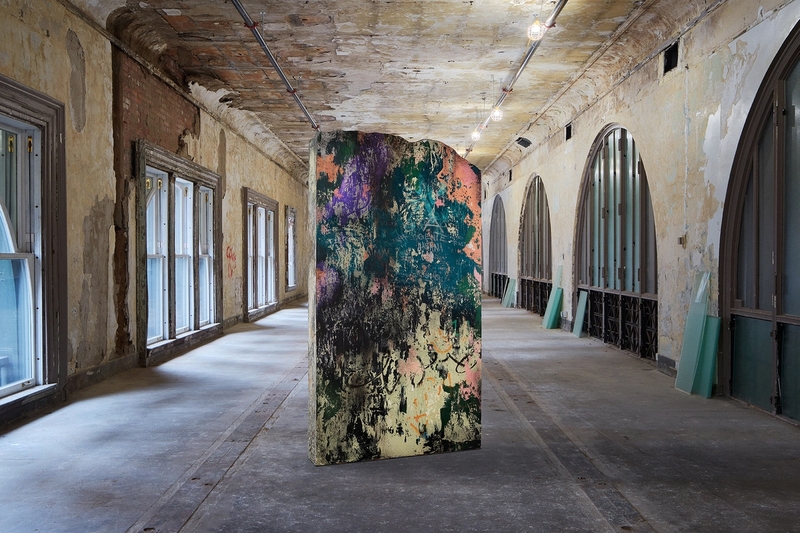
The past few years have seen substantial growth and expansion of digital strategies in the art world, adopted in a number of variations by galleries, art fairs, and institutions; these platforms are important to expand audience reach but do little to push conceptual boundaries within the digital realm. Library Street Collective has developed a unique digital connection between the visual arts and the built environment, incorporating aspects of storytelling, architectural history and an artist’s unique perspective through the presentation of SITE: Art and Architecture in the Digital Space. Each exhibition featured within this digital platform will respond to its environment - making connections between art and place.
Library Street Collective has engaged renowned architectural photographer James Haefner to help realize the vision for SITE. Haefner is the co-creator of 'Michigan Modern: An Architectural Legacy.' The online presentation of artworks carries with it an important environmental benefit, helping to reduce the gallery’s carbon footprint by eliminating exhibition transit from the equation; SITE is entirely digital, and so the art displayed is skillfully and seamlessly rendered into its environment.
As a means to positively impact our community, Library Street Collective will be donating 10% of the proceeds on any works sold during SITE: State Savings Bank to the Ruth Ellis Center, a Detroit-based nonprofit that has established a national reputation for quality and innovation in providing trauma-informed services for homeless, runaway and at-risk lesbian, gay, bi-attractional, transgender and questioning (LGBTQ) youth and young adults of color experiencing systemic and interpersonal barriers to housing, wealth, and wellness. It is crucial now more than ever to help provide a safe place for those who are displaced or cast away.
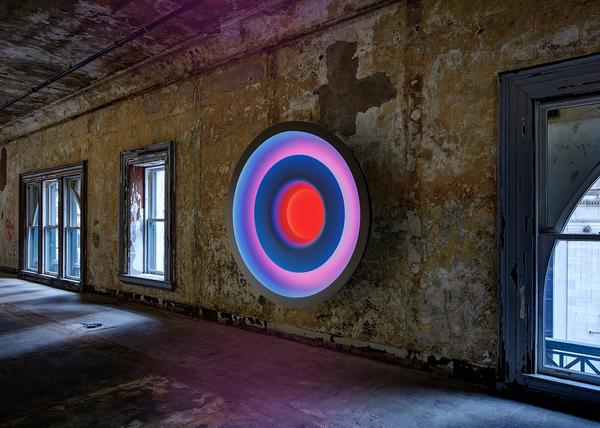
State Savings Bank
This first iteration of SITE is presented within the walls of the Historic State Savings Bank, designed in 1900 by renowned New York architects McKim, Mead & White.
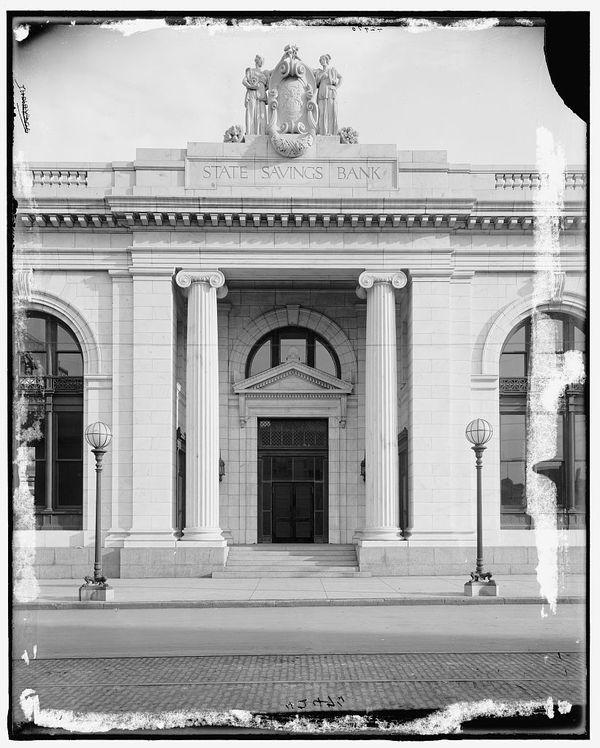
The nearly 72,000-square-foot building sat empty for over 20 years, when in 2014 its main level was restored by Bedrock Detroit and reopened in 2018 to the public with Library Street Collective’s presentation of Mirage Detroit by Doug Aitken. Its mezzanine level remains in transience - a time capsule from a forgotten era - overlooking a vast central hall in the Beaux-Arts style.
The building stands on ground that was included in the stockade surrounding Fort Shelby (1778 - 1826), before the land was transferred to the City of Detroit. The State Savings Bank built the structure in 1900 and by 1915, the organization had outgrown its quarters. Detroit architects Donaldson and Meier (who oversaw original construction) were commissioned to design a harmonious addition. The structure remained in banking use for 80 years, until it was acquired by Silvers Inc. (1980 - 1994), an office supply company. It would be almost 25 years before the doors opened again.
Installation Images
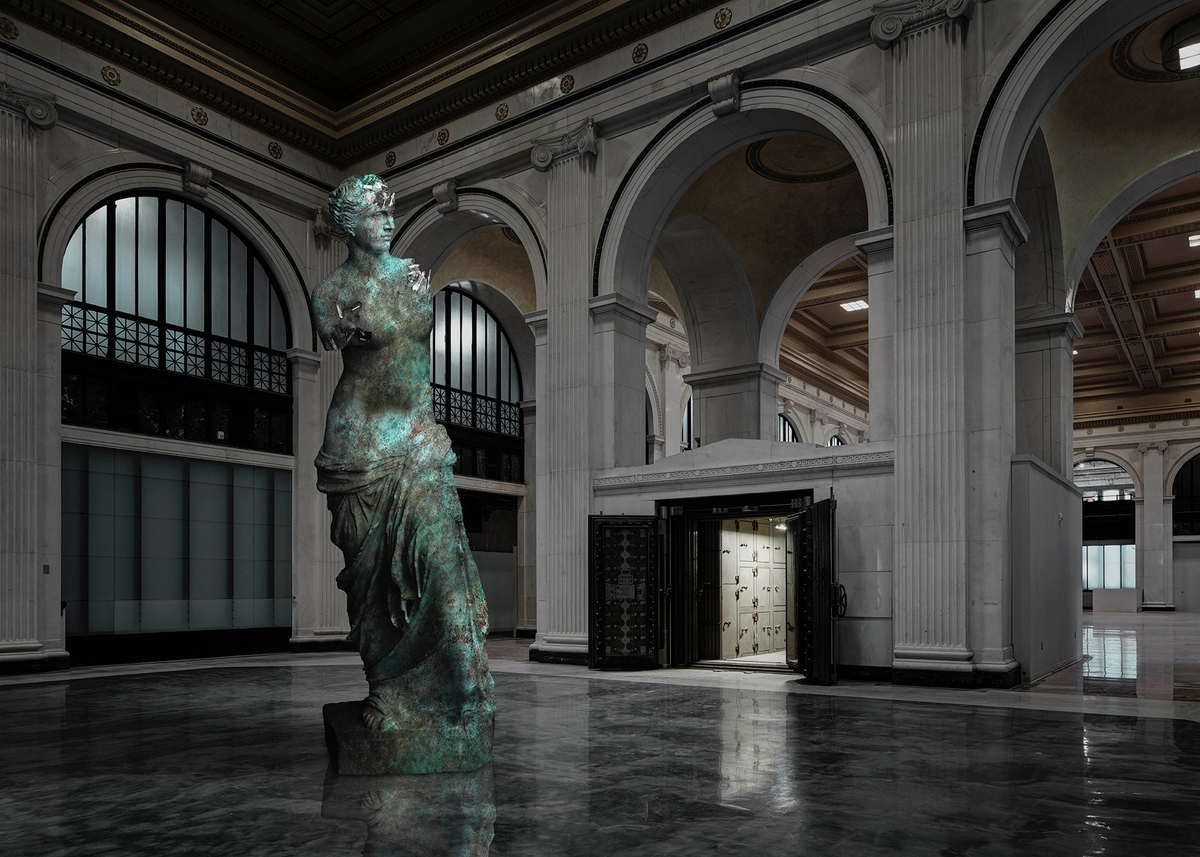
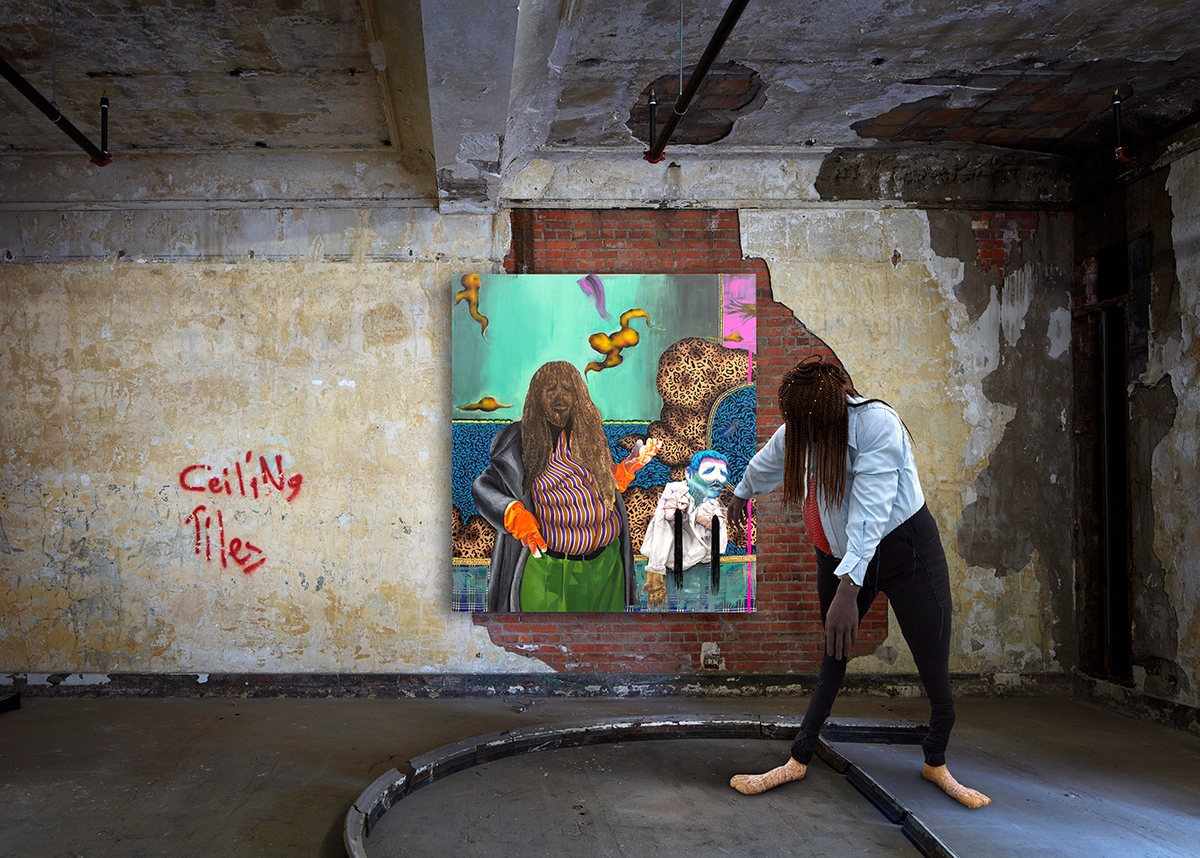
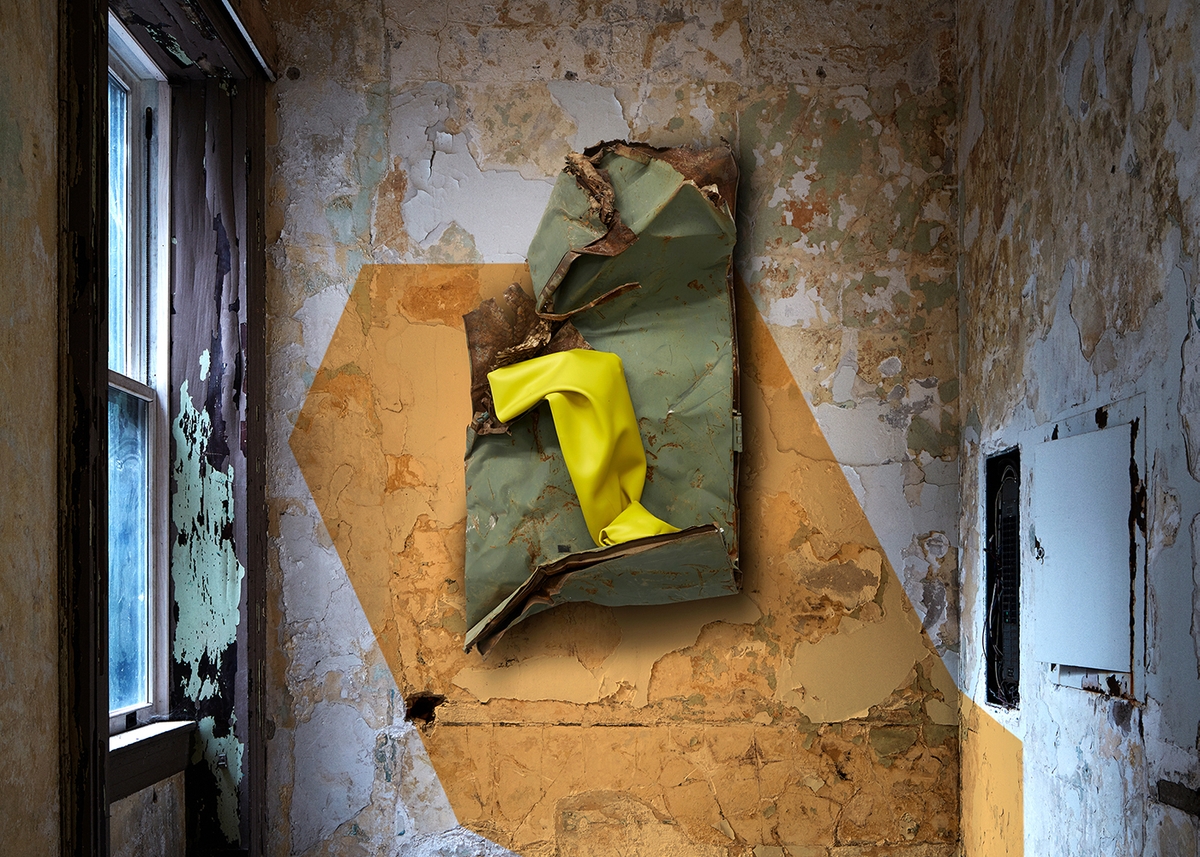
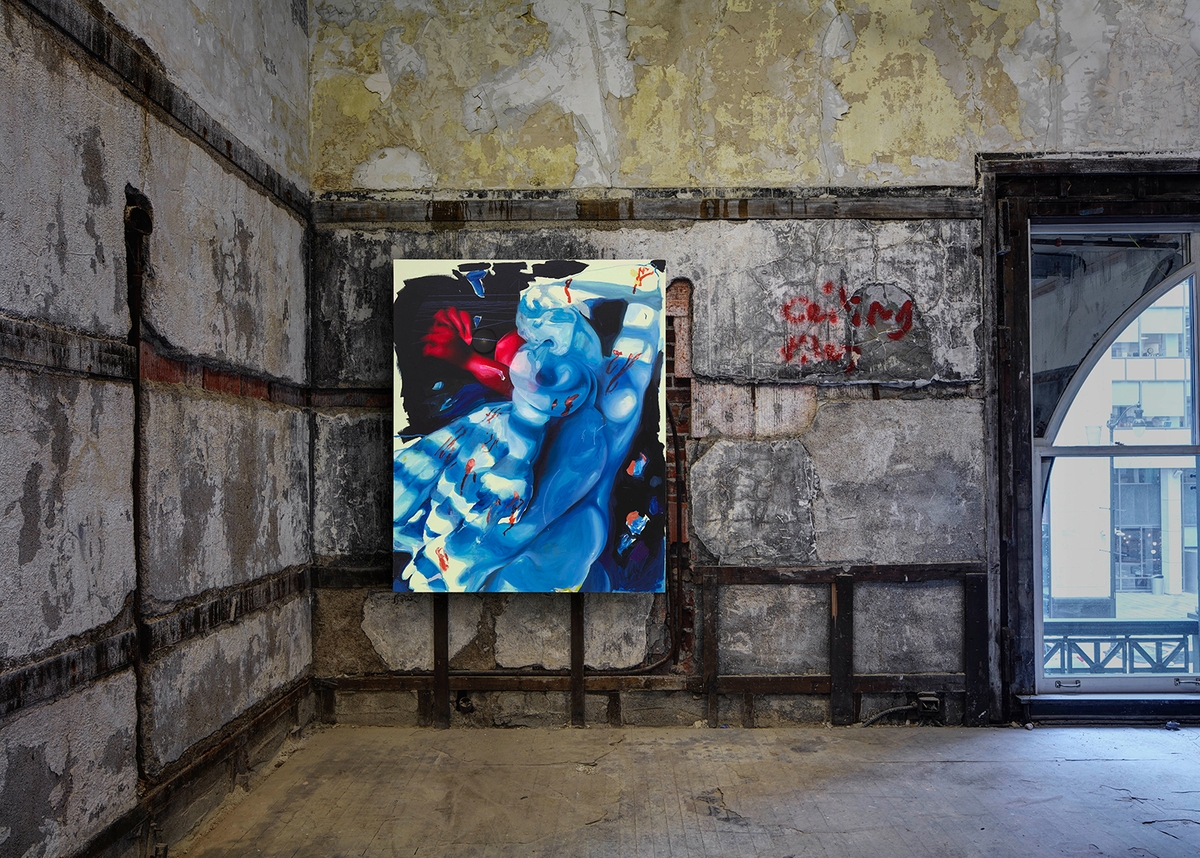
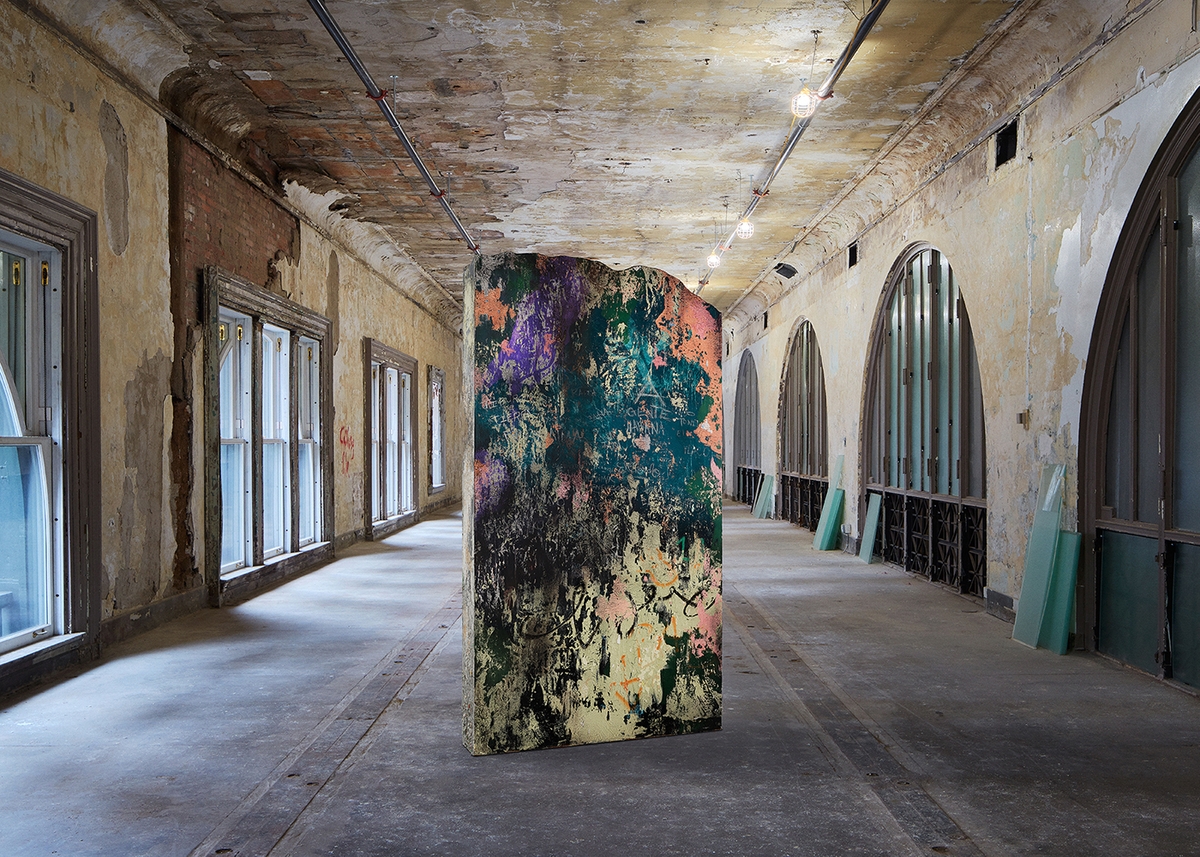
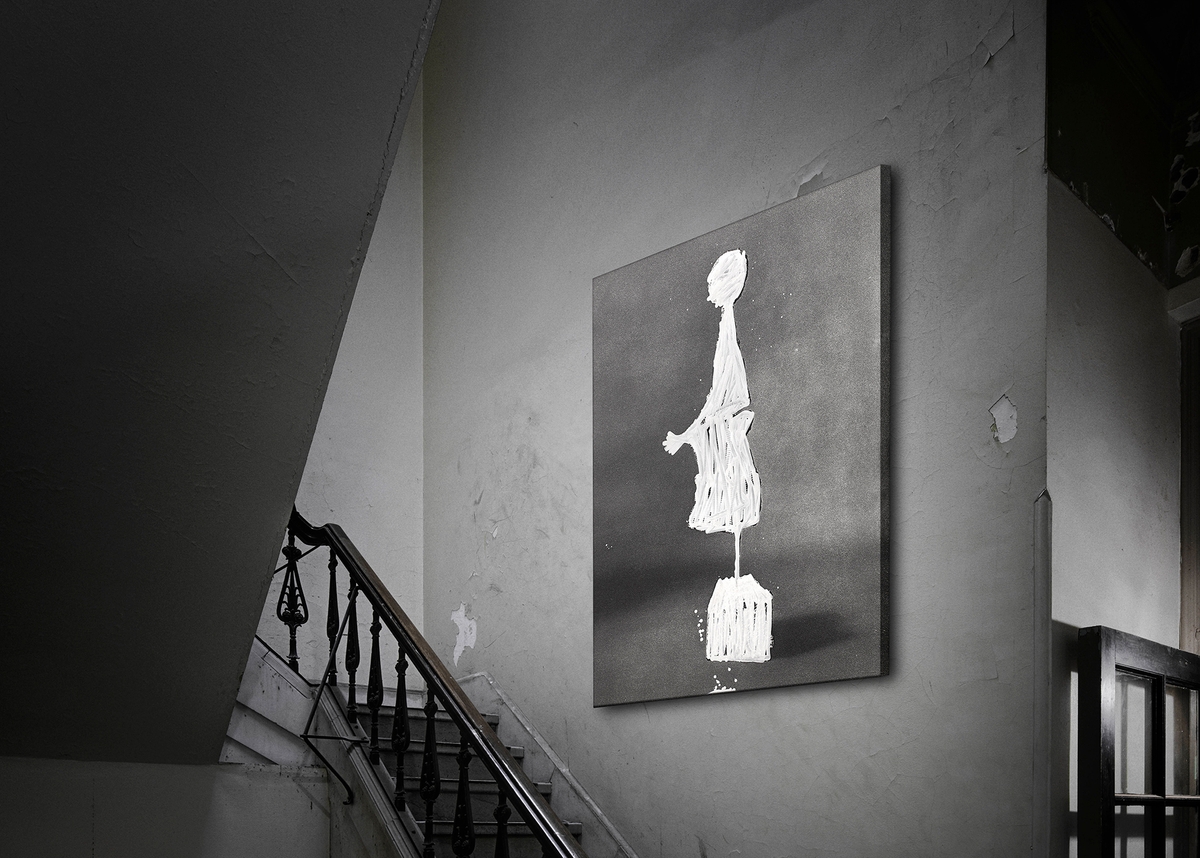
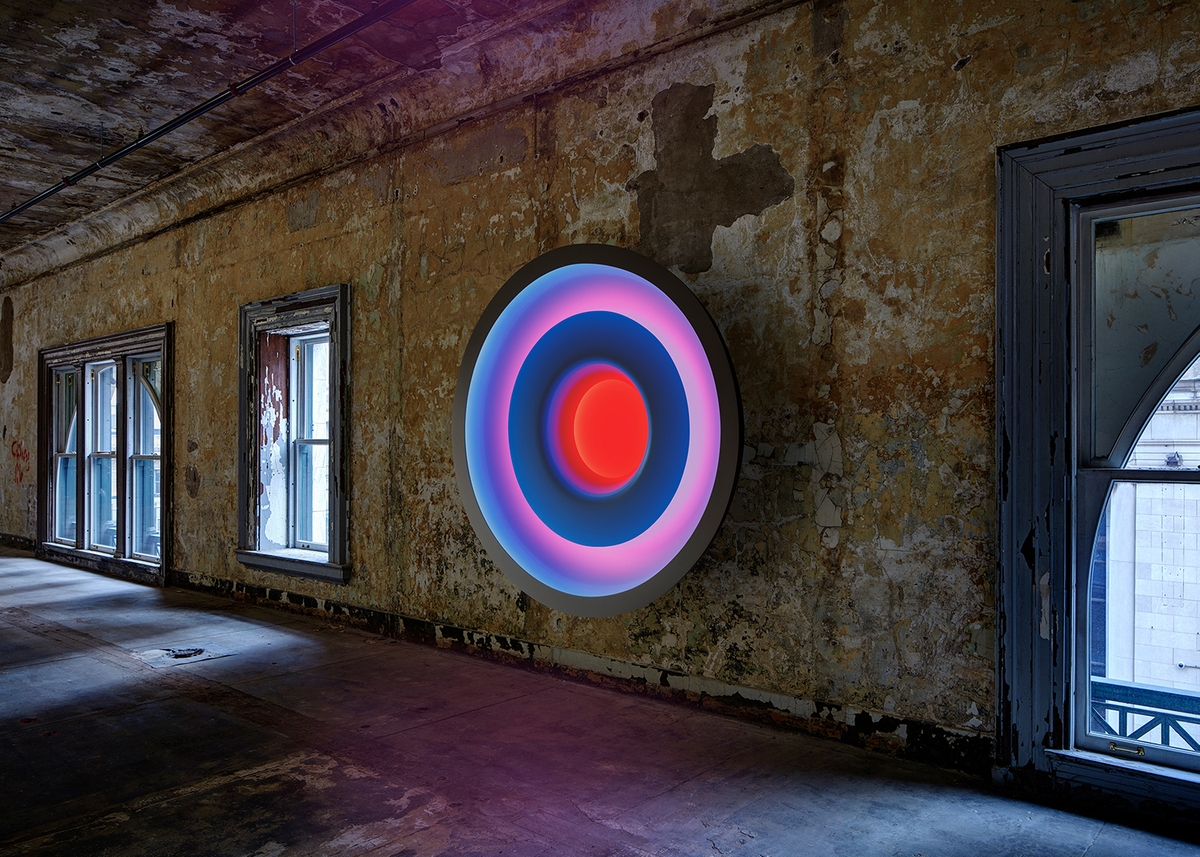
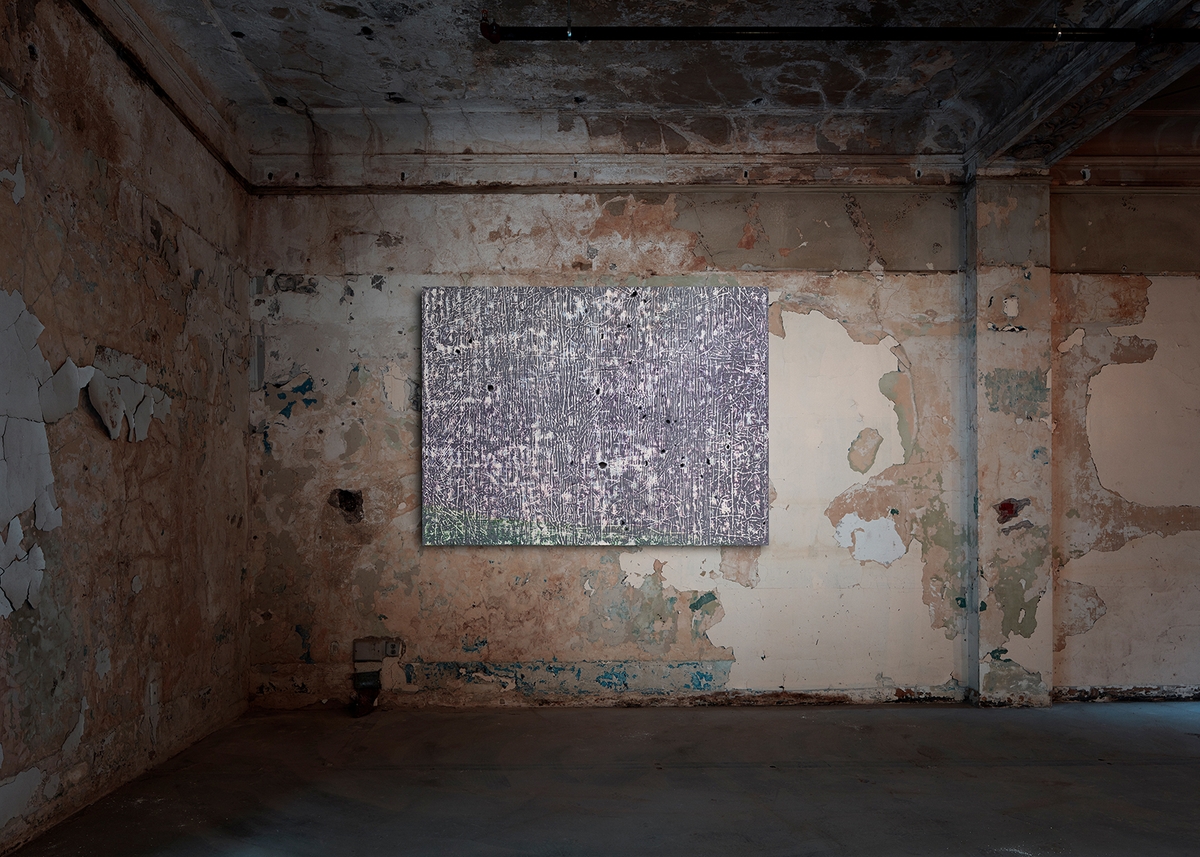
The State Savings Bank is reflective of a number of historic structures in Detroit, built at the height of the city’s cultural and industrial peak in the early 20th Century. These structures were representative of unprecedented prosperity at the time of their conception, but fell into disuse after decades of the economic, racial and social inequality that was widespread across America, but particularly exploitative and polarizing within Detroit. The last decade has seen restoration to some of these buildings, but many will take years to complete; as such, they sit in diverse states of transformation that reflect an amalgam of eras and histories. Works by artists Daniel Arsham, Kadar Brock, Greg Fadell, Simphiwe Ndzube, José Parlá, Rachel Rossin, Phillip K. Smith III and Kennedy Yanko exhibit moments of extinction and revival, challenging perceptions of time through the lens of memory, transition, and posterity.
SITE Artists

Daniel Arsham

Daniel Arsham explores fictional archaeology and the ways in which iconic objects change and move through time and collective memory. The artist is known for prospected discoveries of objects from pop and tech culture, and has recently turned his focus to statues of classical antiquity. Using scans and molds from original works, Arsham implements geological materials to recreate these seminal forms, and examines our perception of works of art that have eclipsed virtuosity toward archetypal familiarity. Based part within historical record and part in interpretation, Arsham inserts areas of decay within the figures. Crystals grow in existing cracks, and places where he imagines that thousands of years will take its toll. This use of archeological materials suggests an undefined future burial of our cultural artifacts, and subsequent exposure to millennia of natural events. Could art objects of antiquity still be moving towards some future completion?
“The work in SITE is a bronze iteration of the Venus de Milo. It is in a state of decay, and the crystals could either be growing together, or the work could appear to be falling apart. The Venus de Milo that is in the Louvre is a marble version found on the island of Milos in the 19th century, and that marble version is thought to be a copy of an earlier work. So many of these works of antiquity have this confused history within them, and my gesture furthers that. An added layer of this exhibition is the digital component; these works are not physically present in Detroit. They are rendered into place. I think this is certainly an appropriate moment to be thinking about how artwork can be presented.”
— DANIEL ARSHAM
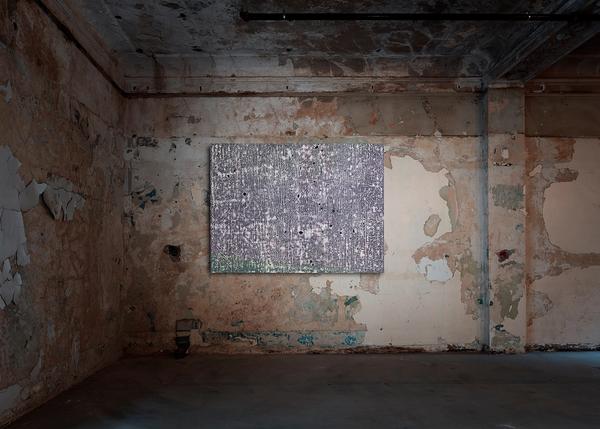
Kadar Brock
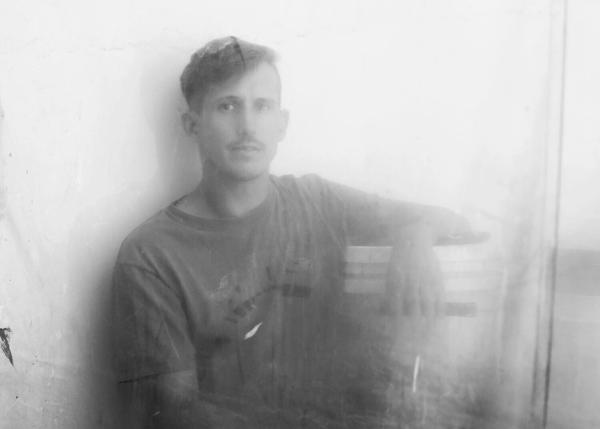
The work of NY-based artist Kadar Brock is driven by a commitment to theory and a ritual of creation and erasure. Often working on multiple canvases at once - many over months or years - Brock creates spirited abstractions that are born from an arduous process of painting, scraping, priming, sanding, and painting again. In order to realize a fully executed work out of layers of ghosted impressions, the artist is committed to creating detailed compositions at each step before taking the piece back through its genealogy time and time again - until there is nothing left to do. In some cases, parts of the canvas are worn so thin that the material hangs from the stretchers, revealing cuts and burnishes through a stratum of color and texture. In this sense, each painting presents its own creation; the mental, emotional and physical charge of the process of painting becomes its subject.

Kadar Brock
guts the wanderer, guts by the sea, the artist's hand paints the world, the egg of the king, i wish i was albert oehlen, 2018
Oil, acrylic, flashe, house paint, and spray paint on canvas
72h x 96w x 2d in
Listen to Kadar Brock
Listen to Kadar Brock
0:00 |
“[The layers] are all being scraped away, sanded, primed, defaced, beat, cracked, and so forth. Part of the process of doing that for me is that all these things that I touch on and paint into these works are things that I feel a lot of ambiguity around, and things that I wish I had more agency over to change. I end up with this final object which is maybe about that space of ambiguity.”
— KADAR BROCK

Greg Fadell

Greg Fadell is an artist who begins each body of work with an existential question about human nature, history, and physicality. He unpacks widely held beliefs about aesthetics and process, considering each piece created as living evidence that there are infinite perspectives through which it can be read. His Cave Paintings are a continuation of works drawn from art historical texts, where the artist uses written records as a material of free agency. In flipping through a book of figurative sculptures, Fadell was struck by the quality of the background imagery and how it was reproduced on each page: “I was wishing ‘nothing’ was present in each rectangle except for the background and shadows.” A cross between the Caves of Lascaux and Plato’s ‘Allegory of the Cave’, he creates rudimentary archetypes by painting over the images in white. Reconsidered, the figures project their own truth, with “Nothing” as the subject.
Soundtrack to Cave Paintings
Soundtrack to Cave Paintings
0:00 |
“[The soundtrack] comments to the work both literally and conceptually. The background of the paintings look like shadows on cavernous walls, so the cavernous sounds are a meta ambiance for the viewer. It references the notion of the cave walls in Plato’s ‘Allegory of the Cave,’ and a possible fictional soundtrack to this room the painting is hanging in.”
— GREG FADELL
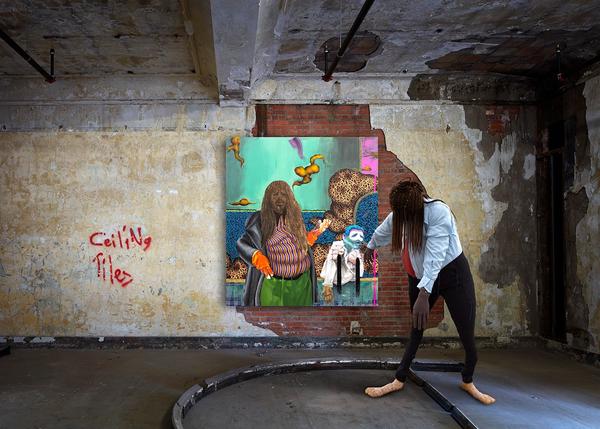
Simphiwe Ndzube

Through painting, collage, and installation, Simphiwe Ndzube assembles a subjective account of a post-apartheid South African experience from a mythological perspective. His figures embody elements of beauty and hardship, presenting those who have been rejected, disfigured and discarded after being exploited for their labor. They find reprieve by dressing in the fashions of the Swenkas, or working-class Zulu men. Ndzube engages found objects - construction site material, discarded clothing, and other castaways - as items of cultural exchange that point to a highly interconnected global economy where we are all responsible for pervasive abuse around the world. To Ndzube, it is crucial that his work be relevant to people from communities like his own, reflecting the journeys that so many have attempted to make despite inheriting conditions meant to keep them from a better life. His tableaux are cathartic and optimistic, using surrealism to forge a future worth dreaming about.
“With these works, I was thinking about the geopolitical, socioeconomic, and spiritual relationships people have to water. The painting ‘Many Many Silences’ and sculptural installation ‘In the Order of Elephants After the Rain’ take place in this mythical setting I’ve been working on, The Mine Moon. In particular, they are about the last remaining dam and the planet’s sole water source, which has been stolen from the moon’s native inhabitants by its colonizers, the Mungu people. A lot of my narratives and mythologies are based off of historical patterns in power relations, both in South Africa, where I am from, and abroad. With water, the struggles that many people are facing in South Africa are almost echoed in places like Mexico or even Detroit. The title ‘In the Order of Elephants After the Rain,’ is derived from an African saying that describes the movement of elephants after a storm following a period of drought.”
— SIMPHIWE NDZUBE

José Parlá
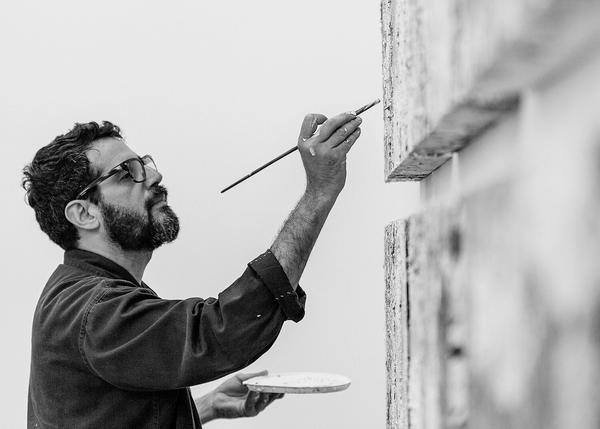
The work of José Parlá is driven by experimental abstraction and urban realism. A rarity in the contemporary art world, Parlá skillfully engages the rich history of painting while infusing elements of ephemerality and the life cycle of cities. Built with countless layers of texture, writing, acrylic, plaster and paper collage, his works communicate the passage of time within city neighborhoods where posters, weather, construction and demolition leave their impressions steadily over time. The calligraphic script that has become an identifying feature evolved out of his involvement in NY underground writing culture and exposure to the varied scripts he encountered during travels to the Middle East, Asia, and Latin America. In a wider sense, his abstractions are those of memory and history, composed of the marks we leave behind. Parlá’s ongoing practice highlights economic, social and environmental issues in cities that have been pivotal in his life, with titles that sway between states of mind and physical place.
“The concept that an abstract painting or sculpture functions as a fragment of a place in both reality and the imagination is central to my work. A memory document. The sculptural painting ‘San Lázaro y Genios’ is based on wall facades of an intersection of two streets in Havana, Cuba. The colors and textures, and the shape of the work resembles a broken wall, a part of something larger, a building, a neighborhood, and its people’s stories. Upon closer look, you can see detailed marks and the scratching of names and messages. I like the idea of taking a work of art that is a segment of one place, and transporting it, presenting it virtually in juxtaposition with another site elsewhere this time within the worn historied facades of the Historic State Savings Bank in Detroit.”
— JOSÉ PARLÁ
Rachel Rossin

Multimedia artist Rachel Rossin is a self-taught coder and programmer who works in painting, installation and virtual reality. In merging traditional techniques with new technologies, she examines the 'slippage between the real and the digital', or embodied and perceptual space. Combining disparate processes in her Hologram Combines strengthens the nature of each; the physicality of paint intensified by ephemeral holographic light. By blending the nuances of real life with those of the avatar, she creates a narrative that is neither physical nor virtual - but an amalgamation of the two - giving the viewer a glimpse of our slow fade into an increasingly virtual world. An early adopter of VR, Rossin welcomes this inevitable transition in both art and human existence: “The gimmick within the work reveals something true about how simple we are; how reality is so frail and simple. A lot of the delight I have with questions surrounding AI involves that.”
Listen to Rachel Rossin
Listen to Rachel Rossin
0:00 |
“It’s the uncanny. It’s locating the familiar and the strange, it’s that feeling now—today—as our psychological and physical spaces are being subverted and upended. That uncanniness is at the heart of my work and is at the heart of this show. It’s very important for where we are today.”
— RACHEL ROSSIN

Phillip K. Smith III
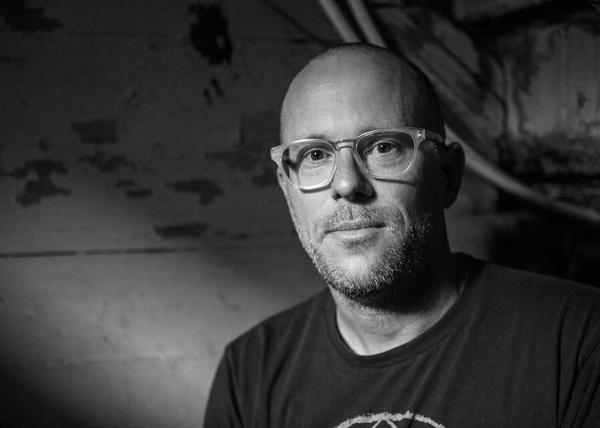
Investigating the relationship between color, form, surface and change, Phillip K. Smith's Portals are part of his ongoing series of light works. Each Portal is a highly specific three-dimensional canvas that he paints with light, revealing its slow shift over time. Color transitions are meticulously chosen, and the piece seems almost to recede into itself before slowly shifting its movement outwards. This quiet motion evokes a sense of breath, inspiring calm and a meditative experience within the viewer. By day, the colors balance with sunlight, creating pastel light and softer shadow relationships, while at night, colors saturate and their glow surrounds the piece. Smith hopes that his viewer is inspired to connect with the work, spending a few moments in its glow. “I want to create work that allows people to slow down and really experience the thing that’s in front of them, which often we don’t have the opportunity to do in our everyday lives.”
Listen to Phillip K. Smith III
Listen to Phillip K. Smith III
0:00 |
“The whole idea of the SITE exhibition is that it is non-physical, but it is still emotional; we still have a response to it. We’re curious about it and ask questions about what we’re looking at - typical questions we would have when looking at an exhibition - yet it’s beginning to push the idea of how work can be assembled in the digital space while dealing with very true physical objects.”
— PHILLIP K. SMITH III
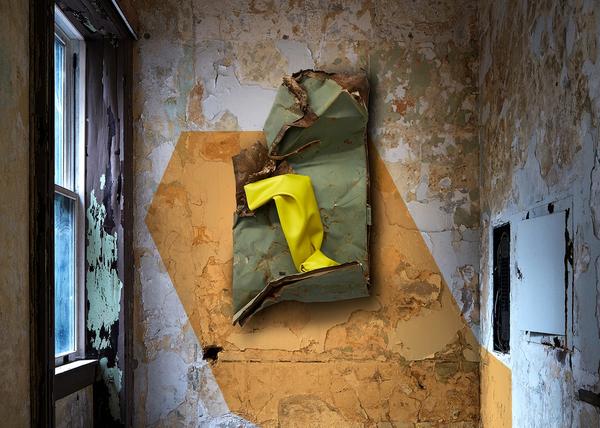
Kennedy Yanko
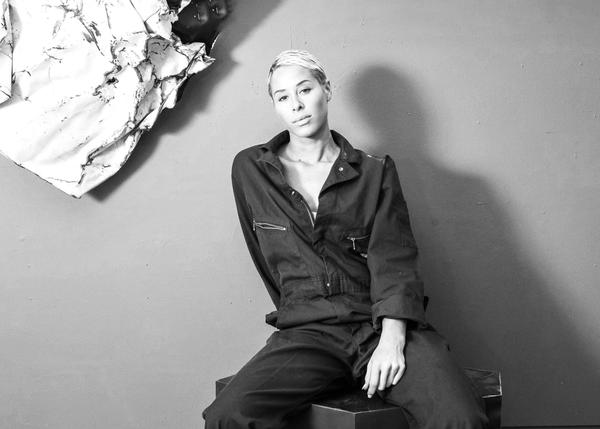
Kennedy Yanko is a Brooklyn-based artist creating sculpture through the union of found industrial objects and paint skins. Repurposed from salvage yards and demolition sites around New York, the scrap metal pieces that are the foundation of her work are modified following the intrinsic qualities and histories of the material. Yanko responds to incidences of labels, rust, and deterioration as if she had incited them herself, guided by the circumstances inherent to each material until she finds resolve. The paint skins she creates have been perfected over years, and each drapes within its metal structure in a way that softens and anatomizes the work, creating lyrical combinations with divergent tactilities. For Yanko, the process of exploring abstraction has been a journey of uncovering free agency and intuition, and breaking free of prescribed narrow perspectives: “Oftentimes, we let our narratives paralyze us and close ourselves off to opportunities for expansion and evolution.”
Listen to Kennedy Yanko
Listen to Kennedy Yanko
0:00 |
“The original colors that were taking place in this piece were calling to me and generally with my work, I am attempting to tone down the metals - or cool them down - and then use the paint skins as a gesture to round out the composition of the piece.”
— KENNEDY YANKO